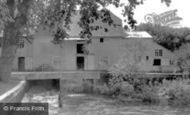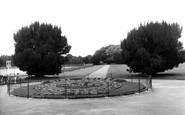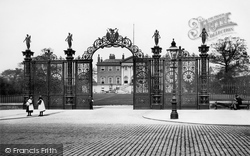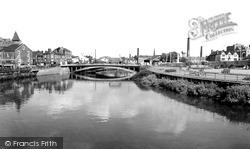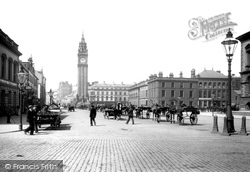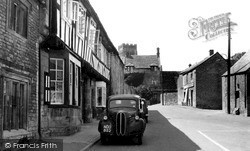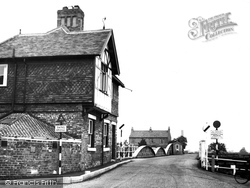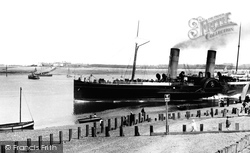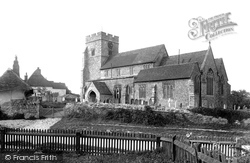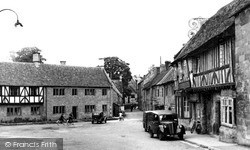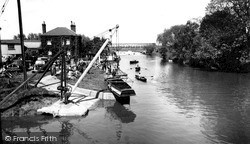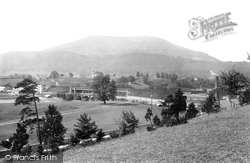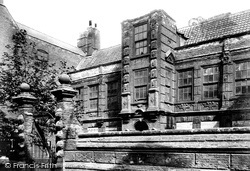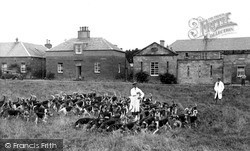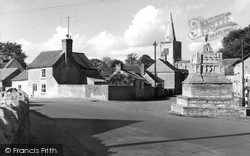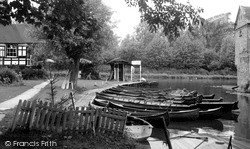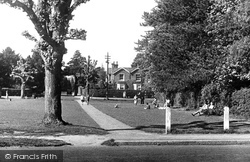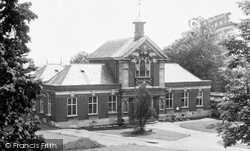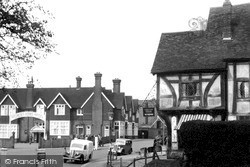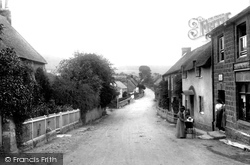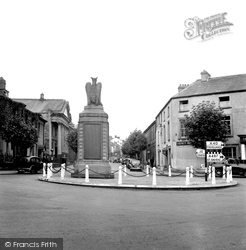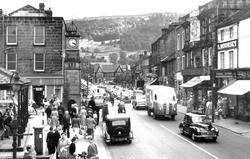Places
18 places found.
Those places high-lighted have photos. All locations may have maps, books and memories.
- Hythe, Kent
- Hythe, Hampshire
- Small Hythe, Kent
- Bablock Hythe, Oxfordshire
- Methwold Hythe, Norfolk
- Hythe, Somerset
- Hythe, Surrey
- Hythe End, Berkshire
- The Hythe, Essex
- Egham Hythe, Surrey
- West Hythe, Kent
- New Hythe, Kent
- Broad Street, Kent (near Hythe)
- Horn Street, Kent (near Hythe)
- Newbarn, Kent (near Hythe)
- Newington, Kent (near Hythe)
- Broad Street, Kent (near Hythe)
- Stone Hill, Kent (near Hythe)
Photos
360 photos found. Showing results 3,801 to 360.
Maps
101 maps found.
Books
10 books found. Showing results 4,561 to 10.
Memories
4,406 memories found. Showing results 1,901 to 1,910.
Sonning Mill
My father worked at Sonning Mill before transferring to Sindlesham Mill, his name was Fred Hopkins, he was a rollerman, we lived in a row of small cottages with a yard behind the cottages and a very long narrow garden . my mother cooked on a ...Read more
A memory of Sonning
The Village Shop
I remember in the 1950s, walking as a child from Greenhurst Lane where I lived, across the railway bridge, down to St Agatha's Hall, then left down the long path to the bottom of the large Village Green. At the bottom on the ...Read more
A memory of Hurst Green by
Crowsley Park Childhood
We moved to Keepers Cottage , Crowsley Park in March 1940, we kept the key to the Park Gate as our water well for drinking water was at the bungalow the other side of the gate. I was told never to tell anyone where they ...Read more
A memory of Crowsley Park by
Bill The Parrot And The Three Stooges
My Grandad Ken Williams lived in Grove Road, he was a Tube train driver and his best friend was Jack Minty. When I was very small he was married to my Grandma Dorothy Williams who worked at the baths and taught a ...Read more
A memory of Hounslow by
Portmanmoor Road Memories .
My nan used to own the florists at 28 Portmanmoor Rd - Mrs. Cox . Next door Mrs.White had a shoe shop . Her son was Tony White . Further on down Portmanmoor Rd was Canns - a hardware shop . Opposite was Edna Stones fruit and veg. ...Read more
A memory of Splott by
Thanet Road / Church Road
I have fond memories of Erith . Both my grandparents once lived there. Does anyone remember Edith and Wally Ayers from Thanet road ? My other grandparents lived in Church road by the Pom Pom. Margery and James Hemmings.
A memory of Erith by
The Bungalow, Widmer End
I am writing in the hope that someone can shed some light on my maternal grandmother, Ethel Mary Wright. Ethel was admitted to St Peter's Home, Kilburn in January 1926. The admissions register when being admitted to St ...Read more
A memory of Widmer End by
Playhillocks Cottage
My sister and I were born in Playhillocks Cottage, Longhaven - me in 1937 and my sister in 1936. When I was about 3 or 4 we moved to a council house in Cruden Bay, Serald Street, where my brother was born. In 1950 we migrated to ...Read more
A memory of Longhaven in 1930 by
Lane End Born Bred From 1956
I grew up in Park Lane, this is the eastern side of Lane End, and then consisted of mostly 1940s- & 1950s-built council houses. I grew up in Coronation Crescent, a semi, 3 bed council house. These were ...Read more
A memory of Lane End by
Life On The Farm At Kettlethorpe
We moved to Park Farm Kettlethorpe when I was 7. The family at this time was reduced to Mum and Dad, Eileen, Brian, Maureen and Gillian. At first we lived in a semi detatched house at the top of the ...Read more
A memory of Kettlethorpe in 1955 by
Captions
4,899 captions found. Showing results 4,561 to 4,584.
Warrington's Town Hall was originally Bank Hall, built between 1749-50 by the world-famous architect James Gibbs as a home for a local businessman, Thomas Patten.
Designed by the Warrington-born engineer John James Webster, the eighty-foot wide bridge was hailed as the most handsome in Britain.
Commerce and travellers were served by the stand of jaunting cars. Drivers at Botanic Gardens contributed £10 towards the cost of the Queen Victoria Statue now in front of the City Hall.
It was built by the town's rich inhabitants during a period of religious fervour.
A castle was built here by the Norman conquerors, and it later became a court of King Edward I and Queen Marguerite. In 1646, after the Civil War, the castle was stripped of its roof.
The submarine then sank by the bow, its stern lifting clear of the water.
By the gate leading into the churchyard are the overhanging eaves of the old priest's house, later to become the centre of the local Girl Guides troop.
If you lived in such a property you paid tax on the area covered by the building at ground level, so the extra floor space upstairs was a bonus.
The school was established by the church in 1842, and its design is typical of others found in villages hereabouts.
Protected from overwhelming traffic by the encirclement of the Upton by-pass to the west and the M53 motorway to the east, Upton has changed little since these views were taken.
Two bridges crossed the Usk at Llanfoist: the medieval stone-arched road bridge is dwarfed by the railway bridge, which was demolished shortly after the Abergavenny to Merthyr line closed in the
The yacht is passing by the north side of the Broad, with 1930s bungalows along the frontage. The yacht is typical of those developed since the 1930s for use on the Broads.
This house, according to tradition, was owned and built during the 16th century by the Lister family, who entertained King Charles I here in 1639.
The kennels for his hunt were built in 1836 on land close by the village green. He improved and enlarged them in 1843.
Inside, by contrast, the late 12th-century nave arcades are serene and perfectly proportioned, as befits a church owned by the mighty Thorney Abbey.
In 1895, St Neots announced the opening of its spa of refreshing and invigorating water emanating from a spring by the Paper Mill.
Two bridges crossed the Usk at Llanfoist: the medieval stone-arched road bridge is dwarfed by the railway bridge, which was demolished shortly after the Abergavenny to Merthyr line closed in the early
Muster Green is another open space maintained by the local council, and it flanks the A272.
It was partly destroyed on 21 August 1775 by a large flood - two of the original small arches were replaced by the single large span we can see here, giving it an asymmetrical appearance.
The library, part funded by a gift to the people of Cheshunt by the Andrew Carnegie Foundation, was opened to the public in 1907. Designed by J Myrtle Smith, the library included a School of Art.
The original village, cut off by the by-pass, is to the west; while this photograph, taken from the junction with Easthill Road, shows the corner of Station Road West.
Beyond are an obscured Bridge Cottage, By the Stream , and Apple Tree Thatch (centre).
In remembrance of the men of the county of Pembroke, who at the call of King and country left all that was dear to them, endured hardness, faced dangers and finally passed out of the sight of men by the
The market town is bisected by the 75-mile River Wharfe.
Places (18)
Photos (360)
Memories (4406)
Books (10)
Maps (101)



